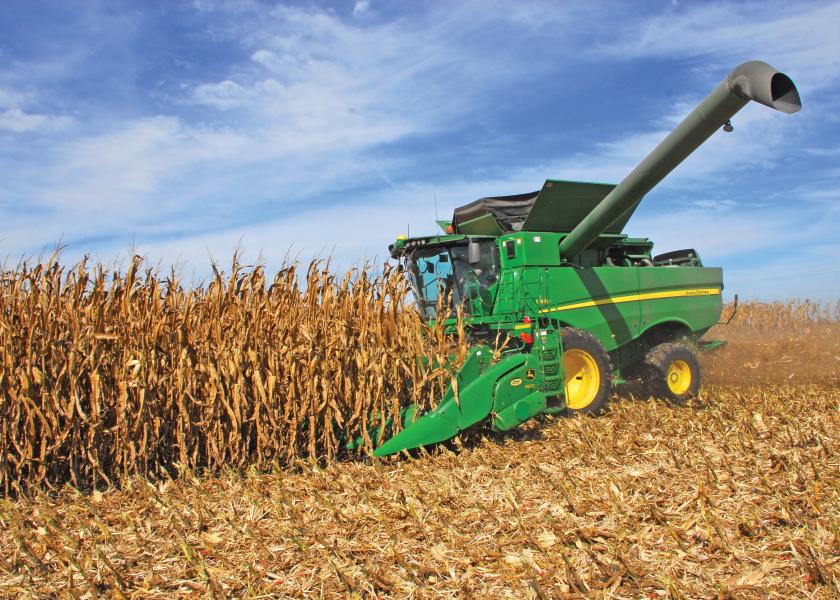Adjust Your Combine to Reduce Damage to High Moisture Corn

Moisture levels are going to be all over the board when combines roll this fall. In high-moisture situations, a few simple combine adjustments can minimize grain damage. To dial in your combine, it’s important to understand where damage occurs as the crop moves through the machine.
Feeding Components
“Don’t blame the concave or rotor for all the grain damage you see in the tank,” says Jeff Gray, product coordinator, Claas Lexion. “Look at the kernels to see how they were damaged to determine adjustments.”
Some grain damage occurs far in front of the concave and rotor. If corn head cross-augers are positioned too high, the flighting can pinch and scrape the tops of kernels as ears are augered toward the feeder house, says Kelly Kravig, Case IH harvest marketing manager. Lower the cross-auger to reduce “tipped” kernels.
Threshing Elements
Once feeding adjustments are appropriate, cracked or broken kernels suggest threshing elements are smashing the kernels off the cobs rather than rubbing and rolling them off. Reduce threshing speed until grain damage is minimized, then tighten the concave clearance to clean the cobs. The optimum distance between the threshing elements and the surface of the concave is slightly wider than the diameter of an average corn cob (shelled) from that field.
It’s easy when experimenting with concave settings to overtighten and end up with a lot of pieces of cobs in the grain tank. If there are excessive cobs in the tank, there are probably broken cobs stuck in the sieves.
Often, the first response is to close the chaffer to clean the grain sample. Closing the chaffer from the cab, with chunks of cobs stuck between the louvers, can bend the louvers and damage the adjusting mechanism.
Before decreasing chaffer settings, manually clean the louvers so the adjusting mechanism can move freely.
Cleaning Fans
Be sure to run cleaning fans near top speed. “Air is the lubricant that lifts and floats crop material across the chaffer and sieve,” Gray says. ”Without enough air, the shaking motion of the sieves will pack the material into a dense mat, trapping the grain and carrying it out the back of the combine.”







